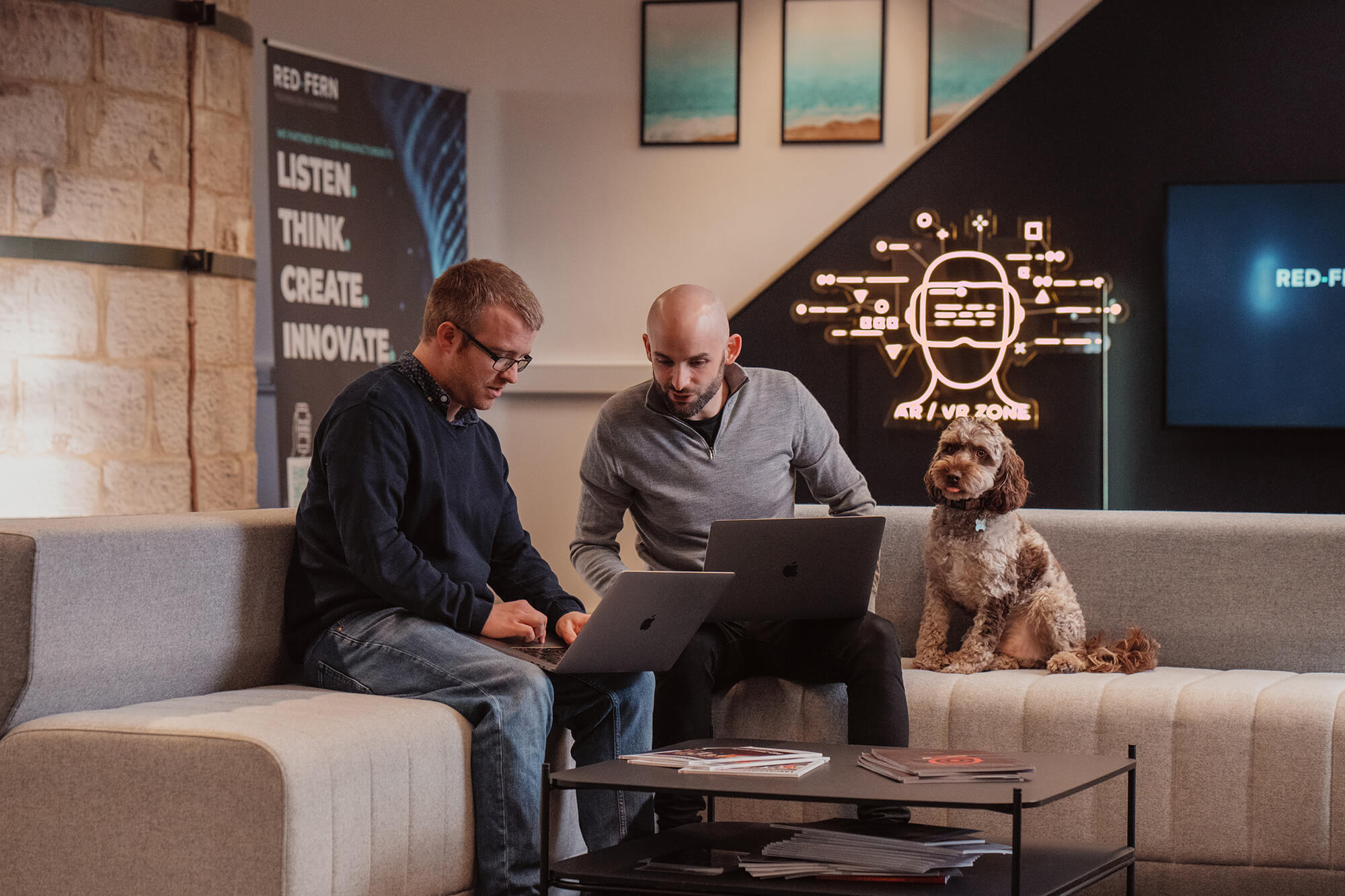Adopting AI strategically in manufacturing and business can significantly enhance productivity and drive innovation
This blog dives into how manufacturers and businesses can successfully adopt AI. We’ll discuss easing common fears, setting clear goals, optimising your work environment, and ensuring leadership alignment.
You’ll find real-life success stories, practical tips, and insights on keeping everyone on board.

We’ll cover:
- Address Any Concerns
- Set Clear Directions for AI Adoption in Your Business
- How AI Can Support the Broader Organisational Goals
- Optimise the Work Environment for AI
- Practical Tips for Leveraging AI in the Workplace
- Leadership Alignment Is Important for AI Adoption
- Remember to Schedule Time to Evaluate AI Technology
Address any concerns
We understand that many people are worried about AI taking their jobs. However, we believe AI can actually support and enhance your team’s roles, making their work easier and more fulfilling.
“We’re at the beginning of a golden age of AI. Recent advancements have already led to inventions that previously lived in the realm of science fiction—and we’ve only scratched the surface of what is possible,”
Jeff Bezos, Amazon CEO
In marketing, for example, AI tools like chatbots and predictive analytics help personalise customer interactions and spot trends. This means your marketers can spend less time on repetitive tasks and more on creative strategy, leading to more engaging campaigns for your clients.
In the design world, AI-powered software like Adobe Sensei generates multiple design options based on initial inputs. This saves time and boosts creativity, enabling designers to refine and perfect their work with greater efficiency or use the time to learn something new.
In manufacturing, AI-driven predictive maintenance systems analyse machinery data to foresee potential issues before they occur. This reduces downtime and maintenance costs, allowing workers to concentrate on optimising production processes and improving efficiency.
By embracing AI, you can empower your employees, making their jobs easier and more impactful. AI doesn’t replace people; it amplifies their abilities, helps them learn new skills, and allows them to focus on what they do best.
Set clear directions for AI adoption in your business
To successfully integrate AI into your business, it’s crucial for leaders to set clear and actionable directions. Start by outlining specific goals and steps for AI adoption. This provides your team with a roadmap, making the transition smoother and less intimidating.
Providing clear instructions and continuous support is essential. Regular training sessions, detailed guides, and an open-door policy for questions can help ease the learning curve and build confidence among your employees.
“When everyone understands how AI fits into their daily tasks and overall objectives, it minimises resistance and encourages a more collaborative environment“
Sean Redfearn – CEO Red-Fern

How AI can support the broader organisational goals
When your team sees how AI supports the broader organisational goals and their personal growth, they are more likely to embrace the change enthusiastically.
Real-life examples from manufacturers highlight the benefits of setting clear directions for AI integration. For instance, General Electric (GE) has successfully integrated AI into its manufacturing processes. By using AI-driven predictive maintenance, GE has significantly reduced equipment downtime. The company provided its employees with comprehensive training and clear guidelines on how to use AI tools, ensuring a smooth transition and widespread acceptance.
Similarly, Siemens has implemented AI to optimise its production lines. By setting clear goals and providing continuous support, Siemens has been able to increase efficiency and reduce costs. Employees were given clear instructions and ongoing training, which helped them understand and embrace the new technology.
By setting clear directions and providing the necessary support, you create a foundation for successful AI integration, ensuring that both your business and your employees can thrive in this new technological landscape.
Optimise the work environment for AI
Streamline workflows and upgrade systems to support AI technology to ensure easy access to necessary resources and support. Creating a supportive infrastructure and providing the necessary tools is key for successful AI adoption.
Practical tips for leveraging AI in the workplace
- Start small: Begin by integrating AI into specific areas like occupancy tracking or environmental monitoring. This allows you to test and refine your approach before scaling up.
- Collaborate with experts: Work with AI specialists to understand the capabilities and limitations of the technology. This ensures you make informed decisions.
- Focus on data quality: Ensure you collect accurate and relevant data, as AI’s effectiveness depends on the quality of the data it processes.
- Embrace continuous learning: Stay updated with the latest AI advancements and continuously explore new ways to integrate AI into your workplace solutions.
Leadership alignment is important for AI adoption

Getting all members of the leadership team to participate in the AI level-setting process is critical for several reasons. Firstly, it helps develop a shared vision, ensuring everyone understands and supports the AI strategy.
Secondly, it allows leaders to identify high-value use cases across different domains, maximising efficiency and value creation. Lastly, it enables proactive risk management, addressing talent gaps, data privacy concerns, and other potential challenges.
For example, Siemens aligned its leadership on the strategic vision of using AI to optimise production lines. They communicated the benefits clearly to their workforce and provided extensive training.
By creating a culture of innovation and implementing robust data governance policies, Siemens successfully integrated AI into their operations, resulting in increased efficiency and reduced costs.
Remember to schedule time to evaluate AI technology
Regularly assess the impact of AI on your organisation by monitoring performance metrics, gathering employee feedback, and staying updated on the latest AI advancements. Continuous evaluation helps ensure that AI systems are delivering the expected benefits and allows for ongoing improvements.
They also conducted pilot programs to refine their AI applications before full-scale deployment and continuously evaluated the impact to make necessary adjustments.
By focusing on these key areas, you can navigate the complexities of AI change management and create a supportive environment where both your business and employees can thrive.
Here’s a list of just some of the software our marketing team use regularly that has AI features integrated:
Which of these could improve your teams productivity?

